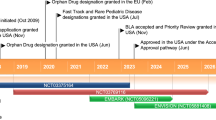Abstract
We have demonstrated that glucocorticoids induce in DDT1 MF-2 cells by a glucocorticoid mediated mechanism the synthesis of a methionine-cysteine rich protein of 29 000 Mr (p29). Induction of p29 is not observed in DDT1 MF-2 GR glucocorticoid resistant variants which have only 7% of glucocorticoid receptor site per cell compared to wild type cells. Increased synthesis of p29 is specific to glucocorticoids since neither androgens, estrogens, progesterone nor the glucocorticoid antagonist dexamethasone mesylate are effective inducers. Stimulation of p29 synthesis in wild type cells is observed at 10−10 M triamcinolone acetonide, reaching a maximum at a concentration of 1 × 10−8 M. The induction of p29 is not a function of glucocorticoid arrest of DDT1 MF-2 cells since DDT1 MF-2 cells promoted to re-enter the cell cycle by 50 ng/ml platelet derived growth factor (PDGF) continue synthesis of p29. Finally, increased levels of p29 translation products are observed in cell free translation assays carried out utilizing poly A− RNA transcripts isolated from glucocorticoid treated cells. These data suggest that the glucocorticoid stimulation of p29 synthesis is a transcriptional and/or RNA processing event controlled by glucocorticoid receptor complexes.
Similar content being viewed by others
References
Syms AJ, Norris JS, Smith RG: Autocrine regulation of growth. I: Glucocorticoid inhibition is overcome by exogenous platelet derived growth factor. Biochem Biophys Res Common 122:68–74, 1984.
Norris JS, Cornett LE, Hardin JW, Kohler PO, MacLeod SC, Srivastava A, Syms JS, Smith RG: Autocrine regulation of growth. II: Glucocorticoids inhibit transcription of c-sis proto-oncogene specific RNA transcripts. Biochem Biophys Res Common 122:124–128, 1984.
Smith RG, Syms AJ, Norris JS: Differential effects of androgens and glucocorticoids on regulation of cell growth and androgen receptor concentration. J Steroid Biochem 20: 277–281, 1984.
Syms AJ, Norris JS, Smith RG: Androgen stimulated elevation in androgen receptor levels is inhibited by the synthetic glucocorticoid triamcinolone acetonide. Biochem Biophys Res Commun 116:1020–1025, 1983.
Syms AJ, Norris JS, Smith RG: Proliferation of a highly androgen-sensitive cloned cell line (DDT1 MF-2) is regulated by glucocorticoids and modulated by growth on collagen. In Vitro 19:929–936, 1983.
Syms AJ, Norris JS, Smith RG: Oncogene expression and growth in the transplantable glucocorticoid-sensitive (DDT1 MF-2) and resistant (DDT MF-2 GR) ductus deferens tumor cell lines in vitro and in vivo (submitted 1984).
Norris JS, Kohler PO: Partial purification of the glucocorticoid receptor from DDT1 cells and characteristics of its interaction with DNA. J Biol Chem 258:2350–2356, 1983.
Norris JS, Kohler PO: The coexistance of androgen and glucocorticoid receptors in the DDT cloned cell line. Endocrinology 100:613–618, 1977.
Norris JS, Bowden C, Kohler PO: Description of a hamster ventral prostate cell line containing androgen receptors. In Vitro 13:108–114, 1977.
Laemmli UK: Cleavage of structural proteins during the assembly of the head of bacteriophage T4. Nature 227: 680–685, 1970.
Bradford MM: A rapid sensitive method for the quantitation of microgram quantities of protein utilizing the principle of protein-dye binding. Anal Biochem 72:248–254, 1973.
Norris JS: Tumors of the accessory sex glands of male Syrian hamsters and hormone action. In: Spring-Mills E, Hafez ESE (eds), Male Accessory Sex Glands, Elsevier/ North Holland Biomedical Press, Amsterdam, pp. 609–616, 1980.
Ivarie RD, O'Farrell PH: The glucocorticoid domain: Steroid mediated changes in the rate of synthesis of hepatoma proteins. Cell 13:41–55, 1978.
Phelps DS, Litwack G: An electrophoretic characterization of the glucocorticoid response of the Fu5–5 rat hepatoma cell line. Eur J Biochem 126:407–415, 1982.
Sporn MB, Todaro GJ: Autocrine secretion and malignant transformation of cells. N Engl J Med 303:878–880, 1980.
Syms AJ, Norris JS, Panko WB, Smith RG: Mechanism of androgen receptor augmentation: Analysis of receptor synthesis and degradation by the density-shift technique. J Biol Chem (in press).
Firestone GL, Payvar F, Yamamoto KR: Glucocorticoid regulation of protein processing and compartmentalization. Nature 300:221–225, 1982.
Vannice JL, Taylor JM, Ringold GM: Glucocorticoid-mediated induction of α1-acid glycoprotein: Evidence for hormone-regulated RNA processing. Proc Natl Acad Sci USA 81:4241–4245, 1984.
Author information
Authors and Affiliations
Rights and permissions
About this article
Cite this article
Norris, J.S., Cornett, L.E., Kohler, P.O. et al. Glucocorticoids induce a 29 000 Mr protein in DDT1 MF-2 smooth muscle cells but not in the DDT1 MF-2 GR glucocorticoid resistant variant. Mol Cell Biochem 68, 79–85 (1985). https://doi.org/10.1007/BF00219391
Revised:
Issue Date:
DOI: https://doi.org/10.1007/BF00219391




